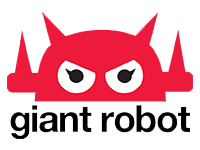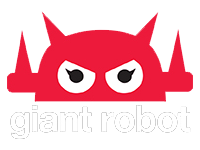Giant Robot Store and GR2 News
The Wall Street Journal’s Japan Realtime reports on an interesting show at London’s Wellcome Collection, “Souzou: Outsider Art from Japan”. The venue is intriguing – a home for the collection of a wealthy pharmaceutical magnate who traveled the world and collected art and objects related to medicine – an interesting residence for this particular group show. The artists are all disabled beneficiaries of Japan’s social welfare program, Haretari Kumottari, which is engaged in the arts as a means of self-expression for marginalized members of society. Over 300 pieces represent the work of “disabled” people with no formal training in the arts, but an uncanny knack for creativity and imaginative expression. They look like a pretty capable bunch to me. The show is being blogged about, featured in international media, and perhaps raises the aesthetic bar for some people who thought Outsider Art was just scrap metal welded into zoo animals by people who’d never been to a zoo. Now it’s also Gundam mecha made out of shiny twist ties! It definitely looks like a show worth checking out if you’re in London. It runs through June 30th, with free guided tours, and a ton of educational events tied in. We’re not really fans of the label “Outsider Art”, but it’s not going away as long as it still appeals to the mainstream art market that relies heavily on “Insider” art existing. The WSJ article seems a bit behind the times on the rise of the Japanese art world beyond what makes it to MoMA, but they still get kudos for spotlighting Souzou. The work being shared from this show brought me back to 2006, when Eric was invited to be a juror for Takashi Murakami’s GESAI art festival. GESAI has been pivotal in opening up the Japanese art world to more than just the juggernauts, and creating access and exposure for its “outsiders”. I was lucky enough to go in 2008, and was completely blown away by the wall to wall magic. Every other exhibit booth had work that felt completely original, earnest and gallery-worthy. It felt like home, and we all came back from that trip re-energized and enthusiastic about what supporting artists meant to all of us. I love when art can do that, when it can create (sometimes inadvertently) a world that you feel a part of. I’m not sure the Souzou artists would want us all up in their heads, but I thank them for sharing these pieces which brought me back to a very special experience, and a reminder of how powerful creative expression can be.
Continue reading
Art Exhibition. Featherweight at West LA College curated by friend and artist Kio Griffith features a roster of artists including many from Japan who came to LA for an art fair. The reason for it to be “Featherweight”? Partially as a concept and challenge but also as a means to deal with the exorbitant prices of shipping, the pieces are mostly compact, deceptively light, but also fun. There are traditional 2d works mixed in with sculptures, some from playing cards and typical off the shelf umbrellas, to sculptures made from other light weight objects. (Rafu - Featherweight) That’s me making a sound to activate the Flora Kao sculpture. [youtube]a8kHoWLjIFs&feature=share&list=UUdgef1qFB7kPekTvRwzka0g[/youtube] [nggallery id=featherweight]
Continue reading
Art exhibition by one of our favorite artists and friend. Art exhibition: ‘Polaris’ from March 8 to April 1, 2012 & Solo show at ART FAIR TOKYO from March 30 to April 1,2012 Here’s more info.
Continue reading
Yoshitomo Nara Life After the Quake. Yes, this story gives you an update on Yoshitomo Nara – the peoples artist. He’s been affected by the quake but got his mind together by working with kids. His latest works sold out in NYC and his sculpts will show in Japan. Go Nara! (WSJ – Nara)
Continue reading
Lee Ufan, Relatum Sekine Nobuo, Phase—Mother Earth Before this article, I’ve barely heard of this movement, but thanks to a big exhibition, collectors who are paying high dollars, the work is getting it’s due. The movement appears to have lasted just a short period from 68-73. Mono-ha means, “School of Things” and appears to be minimal and at times, almost religious. Lee Ufan, a Korean born artist might be the biggest name and has had exhibitions at the Guggenheim and Blum and Poe. Coming soon in 2012 will be a Mono-ha exhibition at Blum and Poe that will take up their entire Culver City space. It’s a huge location and the exhibition should be museum worthy. The rest of the article talks about prices which ultimately is turning heads. (artinamerica – Mono-ha)
Continue reading



